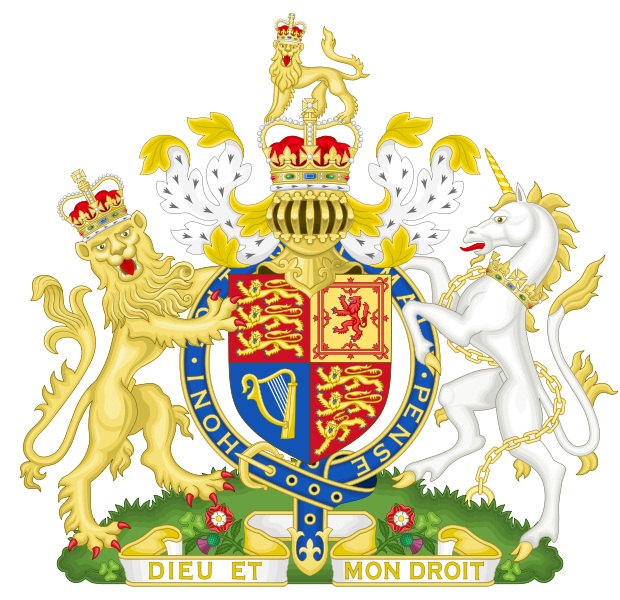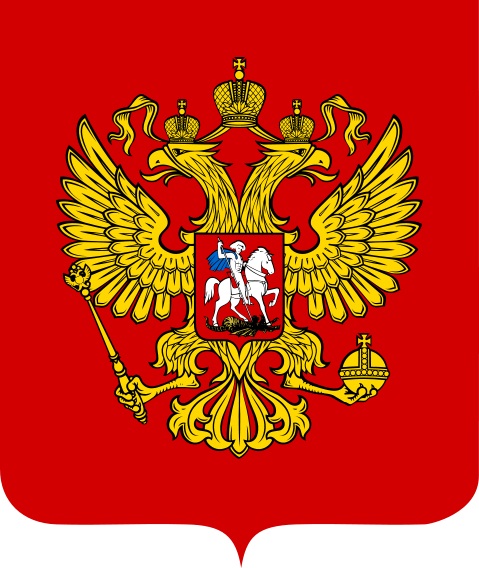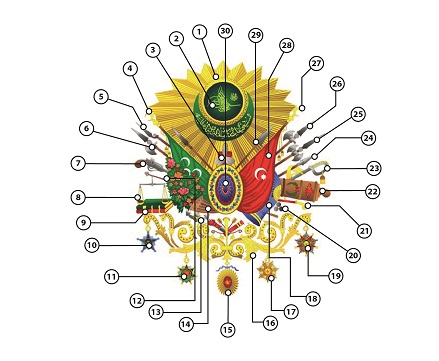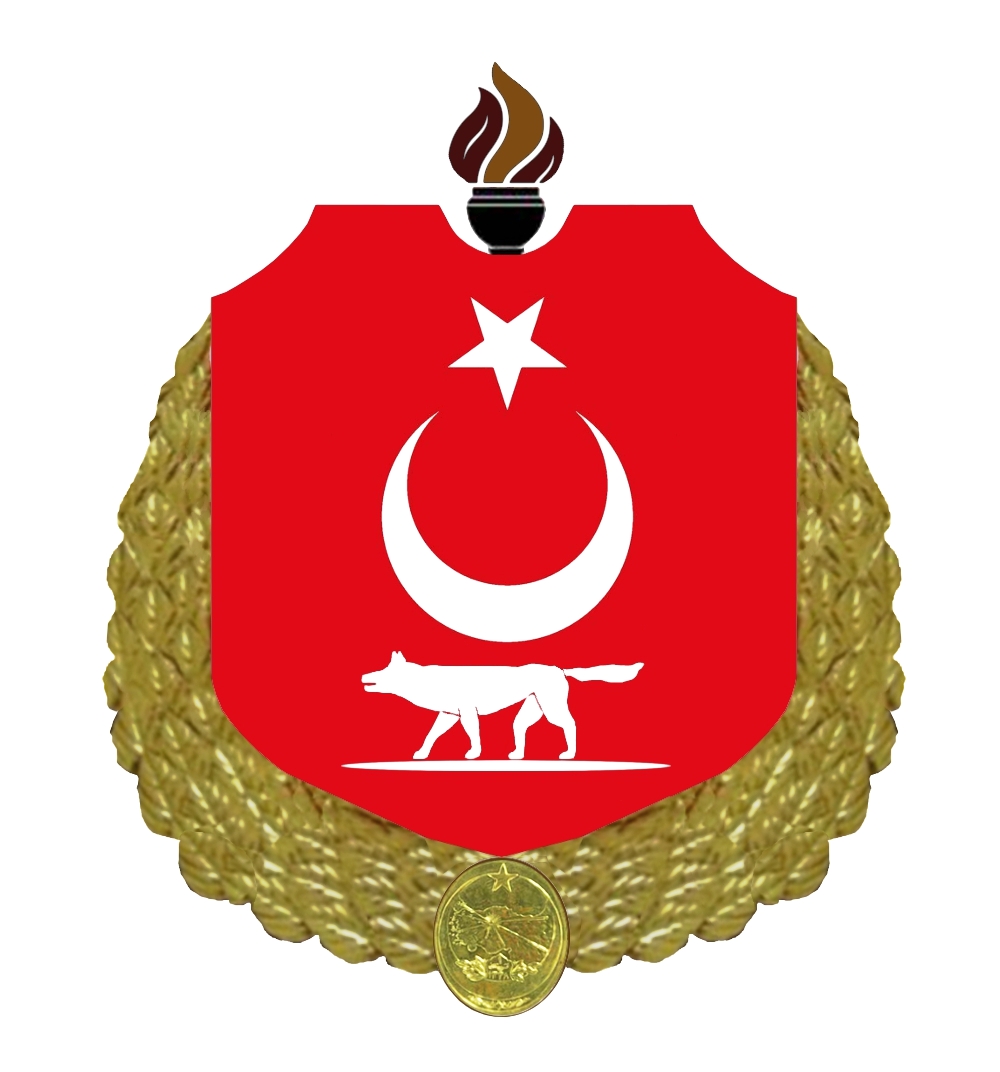.jpg)
THE SECRET OF THE OTTOMAN COAT OF ARMS
Lately, the magnificent Ottoman coat of arms is seen everywhere. People try to soothe their longing for a lost past by hanging this coat of arms on their walls, or using it as wallpaper on their computers and even phones. A few that survived the purge in the early years of the Republic still adorn the entrances of old buildings. This coat of arms is not as old as it is presumed to be, and it has a curious story.
 yer alan orijinal osmanli devlet armasi.jpg)
From Shield to Wall
The tradition of the coat of arms (armorial bearings) began during the Crusades. Knights would keep their units under specific coats of arms in order to distinguish them. In time, the coat of arms became a distinguishing symbol for states, rulers, noble families, cities, even religious orders, universities, clubs, professions, and guilds. At first, it was used on flags, then on shields. The word "arm" already means "weapon." Later, it was embroidered on clothes, helmets, items, and even house walls. Eventually, it began to be passed on as inheritance.


In England, books of coats of arms have been published since the 13th century. In the beginning, anyone could adopt a coat of arms. Later, kings began to grant them. In fact, in 1484, King Richard III founded a college of arms (which investigates, records, and advises on the use of coats of arms, royal grants, and pedigrees) in London. Over time, a branch of science dealing with coats of arms called heraldry emerged. In the 14th century, an Italian jurist named Bartolus de Sascoferrato wrote a comprehensive work on the law and art of coats of arms. In England, there is still a court that deals exclusively with disputes about coats of arms.
Among the ancient Turks, the coat of arms was called "ongun" or "damga." Each tribe had an "ongun"; each chief had a personal "tughra" (monogram/seal) functioning like a seal. This "ongun" was a bird for the European Huns, a double-headed eagle for the Seljuks. The seal of the Kayı tribe is two arrows and a bow.

The Ottoman Coat of Arms in Windsor
In the Crimean War of 1854, Britain, France, and Sardinia fought against Russia as allies of the Ottomans. On this occasion, France awarded Sultan Abdulmejid the Legion of Honour. Not wanting to fall behind France, Britain also awarded the Order of the Garter to the Sultan. Thus, Sultan Abdulmejid became the first sultan to accept a foreign decoration.
Since King Edward III established the order in 1346, it has been customary for the coat of arms of the recipient to be hung on the wall of St. George’s Chapel in Windsor Castle. On this occasion, Queen Victoria sent a heraldic artist named Charles Young to Istanbul to design a coat of arms for the Sultan. The artist, working with the help of a translator named Etienne Pisani, prepared a coat of arms consisting of an imperial turban, plume, tughra, and crescent-star, and submitted it to Kostaki Efendi, the Ottoman ambassador in London. Sultan Abdulmejid liked the draft of the coat of arms presented to him and sent it to the Queen. It was hung in its place.
When Sultan Abdulhamid II ascended the throne, he had this coat of arms inherited from his father reviewed. With the addition of scales and weapons, the coat of arms took its final form. It was adopted as the official coat of arms with an imperial edict dated April 17, 1882.
In fact, the story of the Ottoman coat of arms goes further back. On a map printed by İbrahim Müteferrika in 1720, it is possible to see a prototype of this coat of arms. Around a shield with an upward-facing crescent are spears, banners, twelve cannons of various sizes, and below them are depictions of a bow, arrow, and zurna (a traditional wind instrument). In some books printed during the reign of Sultan Selim III, around the sultan’s tughra, along with the crescent and star, the above-mentioned coat of arms figures are present. Therefore, the Ottoman coat of arms is an evolved form of this.
Symbols in the Ottoman Coat of Arms
Most European coats of arms feature Latin mottos. The Ottoman coat of arms has inscribed within the crescent: al-Mustanidu bi’t-Tawfîqâti’r-Rabbaniyya ad-Dawlah al-‘Aliyyah al-‘Uthmaniyyah (The Sublime Ottoman State relying on Divine Success). The resemblance to the phrase "In God We Trust" on the U.S. dollar is striking. On the right side of the coat of arms is the red Turkish flag; on the left is the green banner of the Caliphate. In some modern depictions, three crescents are shown. However, the original features the crescent and star.
The elliptical shape and turban in the middle of the flags represent the sultanate and caliphate; the flowers on the left, tolerance; the scales on the left, justice; the book on the left, the Quran; the weapons on the right and left, the army; the sun, the greatness of the state; the green circle in the middle of the sun and the tughra inside it, the greatest Muslim Turkish dynasty; the crescent under the tughra, the role of protector of all Muslims in the world; the part with the medallions hanging from it, the deep-rooted Ottoman culture; the medallions hanging at the very bottom represent the Ottoman people from various nations.

2 - The tughra of Sultan Abdulhamid II.
3 - Turban with a plume: represents Osman Ghazi and the throne.
4 - Green banner of the Caliphate.
5 - Bayonet rifle: the main weapon of the Ottoman army.
6 - Double-sided axe.
7 - Revolver.
8 - Scales: represent justice; hung from a six-flanged mace and staff.
9 - (Top) The Quran. (Bottom) Law books.
10 - Order of Distinction (Nişan-ı Ali-i İmtiyaz).
11 - Order of Osmanieh (Nişan-ı Osmani).
12 - Staff and six-flanged mace.
13 - Anchor: represents the navy.
14 - Horn of Plenty.
15 - Order of Glory (Nişan-ı İftihar).
16 - Bow.
17 - Order of Medjidie (Nişan-ı Mecidi).
18 - Bugle.
19 - Order of Compassion (Nişan-ı Şefkat).
20 - Cannonballs.
21 - Sword.
22 - Cannon.
23 - Ceremony sword with hand guard.
24 - Spear.
25 - Double-sided axe.
26 - Single-sided axe.
27 - Flag.
28 - Ottoman standard.
29 - Spear.
30 - Shield with stylized sun motif and 12 stars in the center.

We Don’t Even Have a Coat of Arms!
In 1925, the Turkish Republic’s Ministry of Education opened a competition. Five jury members were from the Academy of Fine Arts and five from the Ministry of Education. At a time when a gold coin was worth 8.5 lira, prizes of 1000 lira for first place, 500 for second, and 300 for third were promised. It was indicated that, unlike the Ottoman coat of arms, pre-Islamic traditions should be taken into consideration. By making the requested changes to his sample, Namık İsmail won first place. In the coat of arms, inside wheat stalks and oak leaves, there was a shield with a burning torch on top, a crescent and star in the center, and a wolf beneath it. The coat of arms was published on January 6, 1927. But it was never officially used. Today, the state does not have an official coat of arms. Various crescent-star shapes are used for this purpose.
Önceki Yazılar
-
THE FIRST UNIVERSITY IN THE WORLD WAS FOUNDED BY MUSLIMS3.12.2025
-
WHO BETRAYED PROPHET ISA (JESUS)?26.11.2025
-
IT HAS BEEN MORE THAN 100 YEARS SINCE ITS ABOLITION, BUT... IS THE CALIPHATE BEING REESTABLISHED?19.11.2025
-
GREETINGS TO YOU, O OTTOMAN SANJAK!…12.11.2025
-
ROTHSCHILDS BROUGHT THE END OF THE OTTOMAN EMPIRE!5.11.2025
-
SHEIKH BEDREDDIN, SON OF THE QADI OF SIMAVNA29.10.2025
-
THE ROOTS OF THE ENGLISH POLITICIAN IN TURKEY – THE TRAGIC END OF ALI KEMAL BEY22.10.2025
-
WHERE IS THE RED APPLE?15.10.2025
-
THE ABBASIDS IN ANATOLIA1.10.2025
-
IMAMS AND MUFTIS AS OFFICERS IN THE OTTOMAN ARMY24.09.2025